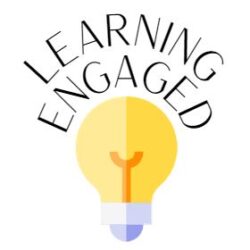 Just this past year, I enrolled in an online course for my degree. I was excited about the course and what I was going to learn that I knew would help me in my future. After the first week of assignments, we learned the rest of the course would be group work and we were all put into groups and had to complete the remainder of the course with our small groups. Did I mention it was an online course? My group mates were all over the United States and there was no way for us to meet in person to work. So, we used Google Hangouts, Google Docs, and a lot of emails. Long story short, it was miserable. One of my group members did basically nothing, and being an overachiever and a perfectionist, I ended up doing 60+% of the work in a group of four. It wasn’t that the other two group members didn’t try, but I did not have time to wait until the last minute to complete an assignment. I put things on my calendar and don’t have time to waste. Needless to say, I learned much less from that course than I would have if I had just completed the project individually. The experiences reinforced my dislike of working in groups as a student.
Just this past year, I enrolled in an online course for my degree. I was excited about the course and what I was going to learn that I knew would help me in my future. After the first week of assignments, we learned the rest of the course would be group work and we were all put into groups and had to complete the remainder of the course with our small groups. Did I mention it was an online course? My group mates were all over the United States and there was no way for us to meet in person to work. So, we used Google Hangouts, Google Docs, and a lot of emails. Long story short, it was miserable. One of my group members did basically nothing, and being an overachiever and a perfectionist, I ended up doing 60+% of the work in a group of four. It wasn’t that the other two group members didn’t try, but I did not have time to wait until the last minute to complete an assignment. I put things on my calendar and don’t have time to waste. Needless to say, I learned much less from that course than I would have if I had just completed the project individually. The experiences reinforced my dislike of working in groups as a student.
As a teacher, I LOVE when my students are working in groups. Research supports the use of group work for learning and I have seen first-hand how working in groups can increase a student’s achievement. It was not until I went back to school I realized a difference exists between working in groups and collaborating. Between putting students in groups to do work and having students learn from their peers.
As a student, I greatly dislike working in groups. I am an overachiever and I usually end up doing the bulk of the work and frustrated at the group member who does the littlest they can to get by. It was not until I had a class that put me in a group with the objective to collaborate and learn, not just complete a task, that I start to fully understand group work from a student perspective.
In my experience, working in groups is just for task completion. The group is given an assignment they must complete. Learning is primarily done by each individual, with little discussion, collaboration, or enhanced understanding, if at all. At most, discussion includes who is going to complete each part of the assignment. If you have ever worked in a group before, you may be able to relate.
Learning in groups looks entirely different. Yes, there is a task to complete but it is more about the process than the product. Group discussions lead to collaboration. Collaboration then leads to a better understanding of the concept and internalization of the concept. It involves brainstorming, setting goals and objectives, discussing difficult, open-ended questions, and completing a product that is more than just enough to get an A. It is the way we learn when we do book talks, or Bible studies, or painting in groups (e.g., Painting with a Twist). We are excited to be there, full of inquiry leading to discussion, and optimistic about the end result.
As a teacher, I can sadly say that I did not fully understand the concept of working in groups until I became a student again. I often divide my students into groups; flexible, intentional groups. It is not the way I group my students that is the problem, I have looked up many successful ways to do group work over the years. It is the assignment and objectives I give that are lacking. I set my students up to divide the project into pieces, with each student taking part, to compile a final product to turn in. I incorporate reflections and individual pieces to make sure everyone has to pull their weights (as much as possible), but I realize now learning was not optimized.
I must change the way I conduct group work so my students are not just completing a task in groups but truly learning while working with others. Collaborating to enhance their understanding. If these are the types of group assignments I implement, the level of student learning will grow and develop. I cannot wait to try out my new ideas and I know my students will benefit. It will be difficult and my students will have to push themselves, but shouldn’t that always be the goal? If you have great ideas for learning in groups instead of working in groups, please let me know.


